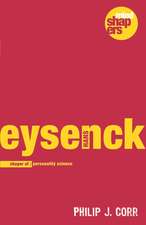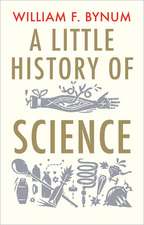Studies of Pallas in the Early Nineteenth Century: Historical Studies in Asteroid Research
Autor Clifford J. Cunninghamen Limba Engleză Hardback – 22 noi 2016
It was Olbers who discovered Pallas, in 1802, the second of many asteroids that would be officially identified as such. From the Gold Medal offered by the Paris Academy to solve the mystery of Pallas' gravitational perturbations to Gauss' Pallas Anagram, the asteroid remained a lingering mystery to leading thinkers of the time. Representing an intersection of science, mathematics, and philosophy, the puzzle of Pallas occupied the thoughts of an amazing panorama of intellectual giants in Europe in the early 1800s.
| Toate formatele și edițiile | Preț | Express |
|---|---|---|
| Paperback (1) | 649.87 lei 6-8 săpt. | |
| Springer International Publishing – 23 iun 2018 | 649.87 lei 6-8 săpt. | |
| Hardback (1) | 656.43 lei 6-8 săpt. | |
| Springer International Publishing – 22 noi 2016 | 656.43 lei 6-8 săpt. |
Preț: 656.43 lei
Preț vechi: 772.26 lei
-15% Nou
Puncte Express: 985
Preț estimativ în valută:
125.63€ • 130.81$ • 106.17£
125.63€ • 130.81$ • 106.17£
Carte tipărită la comandă
Livrare economică 07-21 martie
Preluare comenzi: 021 569.72.76
Specificații
ISBN-13: 9783319328461
ISBN-10: 3319328468
Pagini: 350
Ilustrații: XIII, 477 p. 326 illus., 137 illus. in color.
Dimensiuni: 155 x 235 x 27 mm
Greutate: 0.86 kg
Ediția:2nd ed. 2017
Editura: Springer International Publishing
Colecția Springer
Locul publicării:Cham, Switzerland
ISBN-10: 3319328468
Pagini: 350
Ilustrații: XIII, 477 p. 326 illus., 137 illus. in color.
Dimensiuni: 155 x 235 x 27 mm
Greutate: 0.86 kg
Ediția:2nd ed. 2017
Editura: Springer International Publishing
Colecția Springer
Locul publicării:Cham, Switzerland
Cuprins
Chapter 1 A Disturbing Inclination.- Chapter 2 The Great Probability Debate.- Chapter 3 The Gold Medal.- Chapter 4 The Gauss Anagram.- Chapter 5 Hypothetical Planets.- Chapter 6 New Planets: The Transition from 1745 to 1804.- Chapter 7 The Olbers Letters.- Chapter 8 The Gauss Letters.-Chapter 9 The Harding Letters.- Chapter 10 Herschel's Asteroids.- Chapter 11 Scientific Papers.- Chapter 12 Gauss: The Great Asteroid Treatises.- Appendices
Notă biografică
Clifford J. Cunningham did his Ph.D. work in the history of astronomy at James Cook University and the University of Southern Queensland in Australia, and he is affiliated with the National Astronomical Research Institute of Thailand. He has written or edited 13 books on the history of astronomy, and his papers have been published in many major journals, including Annals of Science, Journal for the History of Astronomy, Culture & Cosmos, Journal of Astronomical History and Heritage, Studia Etymologica Cracoviensia, The Asian Journal of Physics and The Milton Quarterly. Asteroid (4276) was named Clifford in his honor by the Harvard-Smithsonian Center for Astrophysics.
Textul de pe ultima copertă
Based on extensive primary sources, many never previously translated into English, this is the definitive account of the discovery of Pallas as it went from being classified as a new planet to reclassification as the second of a previously unknown group of celestial objects. Cunningham, a dedicated scholar of asteroids, includes a large set of newly translated correspondence as well as the many scientific papers about Pallas in addition to sections of Schroeter's 1805 book on the subject.
It was Olbers who discovered Pallas, in 1802, the second of many asteroids that would be officially identified as such. From the Gold Medal offered by the Paris Academy to solve the mystery of Pallas' gravitational perturbations to Gauss' Pallas Anagram, the asteroid remained a lingering mystery to leading thinkers of the time. Representing an intersection of science, mathematics, and philosophy, the puzzle of Pallas occupied the thoughts of an amazing panorama of intellectual giants in Europe in the early 1800s.
Caracteristici
Continues the story of early asteroid discovery begun in other volumes, moving on from the discovery of Ceres to the discovery of Pallas, the second asteroid discovered Includes the first English translations of multiple primary sources, including two major papers in Latin, one by Regner, the other by Gauss Extensively examines the problem caused by the perturbations of Pallas' high orbital inclination, which led to Gauss' creation of the method of least squares Includes supplementary material: sn.pub/extras















